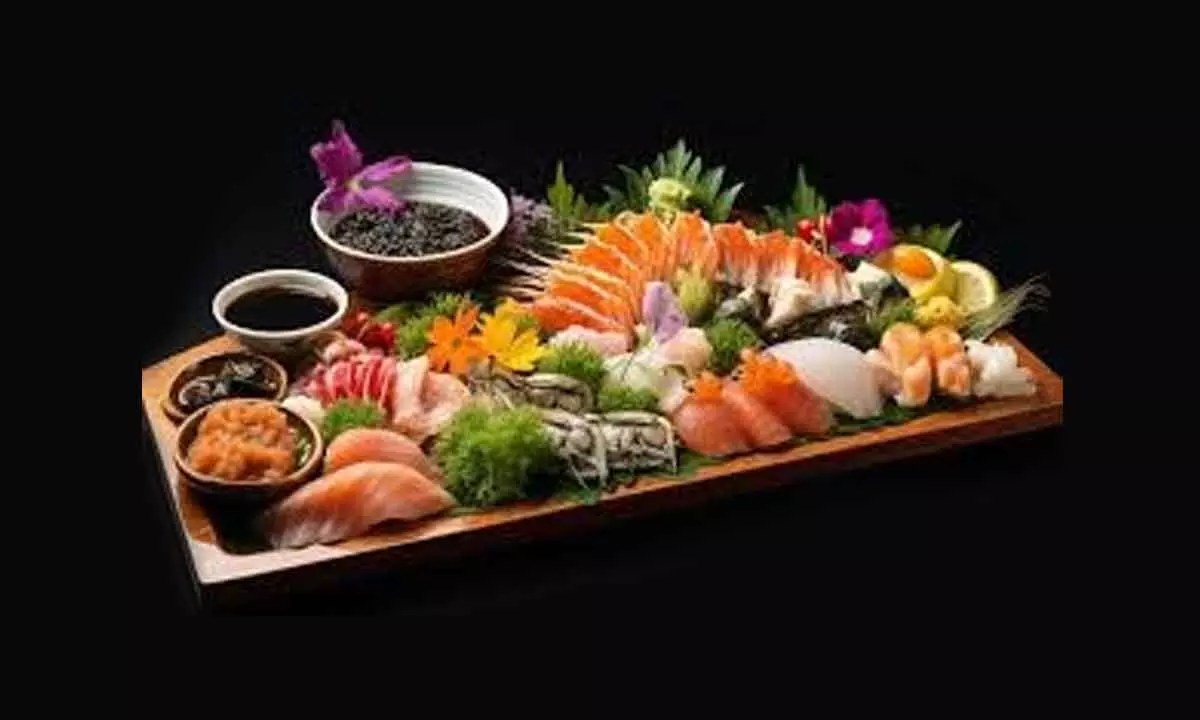The beauty and mystery of colours

Colours in food presentations can also have the power to impact on people’s appetites. Chefs and culinary enthusiasts have embraced the idea of creating visually stunning and aesthetically pleasing ‘thali’ arrangements that elevate the dining experience, using vibrant colours and striking contrasts resulting in a visually stunning and appetizing display
Association of different colours with various feelings, expressions and situations is common in an amazing canvas of fields, from areas such as governance and national identities at one end to culinary presentations and folk music at the other.
To feel ‘blue’, for example, can mean anything, from just feeling under the weather to being acutely depressed. In the arena of light music, especially the type that is popular in the Western countries, ‘Rhythm and Blues’, was a form of popular music which originated in the USA, just before ‘Rock ‘n’ Roll’ took over, with ‘Rhythm’ referring to a strong, driving beat, while ‘Blues’ reflected the soulful and emotional vocal style often associated with that genre. In an era when an alarming depletion in the quality of the environment has become an unprecedented challenge, the word ‘green’ has assumed great significance. One, therefore, sees expressions such as ‘green technology’ and ‘green’ buildings becoming common parlance.
In the more serious area of governance, colour has come to assume considerable significance in describing the nature of administrative actions. Following a judgment of the Supreme Court of India, it is now widely agreed that actions by public servants need to conform to certain norms. They ought not to be arbitrary, discriminatory or mala fide. Any action that suffers from any of these three weaknesses is referred to as “colourable” exercise of authority. Red tape is an idiom referring to regulations or conformity to formal rules or standards which are claimed to be excessive, rigid or redundant, or to bureaucracy claimed to hinder or prevent action or decision-making. It is usually applied to governments, corporations, and other large organisations. It is generally believed that the term originated with the Spanish administration of Charles V, King of Spain and Holy Roman Emperor, in the early 16th century, who started to use red tape in an effort to modernise the administration that was running his vast empire. The red tape was used to bind the most important administrative dossiers that required immediate discussion by the Council of State and separate them from issues that were treated in an ordinary administrative way, which were bound with ordinary string. In David Copperfield, Charles Dickens wrote, “Britannia, that unfortunate female, is always before me, like a trussed fowl: skewered through and through with office-pens, and bound hand and foot with red tape.”
Colours are also used by countries for expressing their national character and culture. Flags of countries are national symbols which represent core values of the countries together with their history and values depicted in their design. As in the case of other contexts, the colours in flags can stand for different attributes of the countries such as courage, alertness, determination, prosperity, or energy. In the case of India, the saffron band at the top depicts strength and courage, the white one in the middle truth and the green, and the one at the bottom, fertility, growth and auspiciousness of the land. The Dharma Chakra in the middle is a symbol of peace, progress and dynamism. Country flags are usually multicoloured with Belize leading the pack with a flag that has 12 colours. On the other hand, Libya in 1977 set the trend of single coloured flags with its flag showing a green field.
Colours also play an important role in chemistry. In what is known as the litmus test, a special type of paper, called litmus paper, is dipped in a liquid being examined. The paper turns red, if the liquid is acidic, and blue, if it is alkaline. The finding provided by the test is decisive and final, leading to the usage of the expression litmus test in real life to mean a method by which a judgement is made about an attitude, event or fact, being acceptable or otherwise.
The film industry is another field in which colour has a significant role to play, as the impact of colour on human psychology is recognised as playing a key role in creating the right mood and evoking certain emotions from the audience.
In the subject of child education, again, colours are known for their role in the development of neural pathways and to create an interesting learning environment. Having all different colours available allows child to differentiate between objects and gives it visual stimuli to keep it interested and intrigued.
The trichromatic theory of colour vision says that human eyes only perceive three colours of light: red, blue and green. The wavelengths of these three colours can be combined to create every colour on the visible light spectrum. This theory was first suggested by Thomas Young and later tested by Hermann Von Helmholtz. These are the three colours that one sees in television. I still recall the joy and pleasure I experienced upon first watching colour TV in Delhi in 1982. Some of the most commonly used and popular colours, however, are really hybrids of different primary colours. Magenta, for instance, is a mixture of violet and red, while pink of red and white. Likewise, maroon is a mixture of red and brown.
Colours in food presentations can also have the power to impact on people’s appetites. In recognition of that, there has, in recent years, been a noticeable shift towards incorporating artistic elements in the presentation of meals in ‘thali’s, which are stainless-steel platters with compartments for dishes with different flavours and textures and provide a complete and balanced meal. Chefs and culinary enthusiasts have embraced the idea of creating visually stunning and aesthetically pleasing ‘thali’ arrangements that elevate the dining experience, using vibrant colours and striking contrasts resulting in a visually stunning and appetizing display.
A person who often changes his or her beliefs or behaviour in order to please others or to succeed is often compared to a chameleon, a type of lizard that can change the colour of its skin to look like the colours around it.
So bad is my colour vision that I have considerable difficulty while driving a car. At crossroads, when the traffic lights are on, I can hardly tell the red from the amber, or the green. On occasion, I have had to be prodded into deciding whether to make my car come to a stop, or get it moving, by someone sitting next to me, telling me whether it is the light on the top, the middle or the bottom which is on! The impairment, however, did not prevent me from enjoying the way in which the roadside yellow – orange of the Canadian maple flower followed us all the way as we drove from Montréal to Ottawa when I had accompanied Vice President Hidayatullah on his visit to that country in 1982.
I had ended the previous part with a snippet from my experience referring to my defective colour vision, As a matter of fact, it was actually years ago, during my undergraduate days, in Hindu College, that I first suspected that condition, while conducting an experiment in a chemistry laboratory. The procedure required me to pour a liquid, from a pipette into a beaker containing another liquid. I was to stop when the liquid in the beaker began to turn pink. I kept pouring until an exasperated Dr Mehra, the Chemistry Professor, shouted from the dais on which he was sitting, several metres away, “For God’s sake Mohan, stop! The liquid has actually turned purple”!
(The writer is formerly Chief Secretary, Government of Andhra Pradesh)










